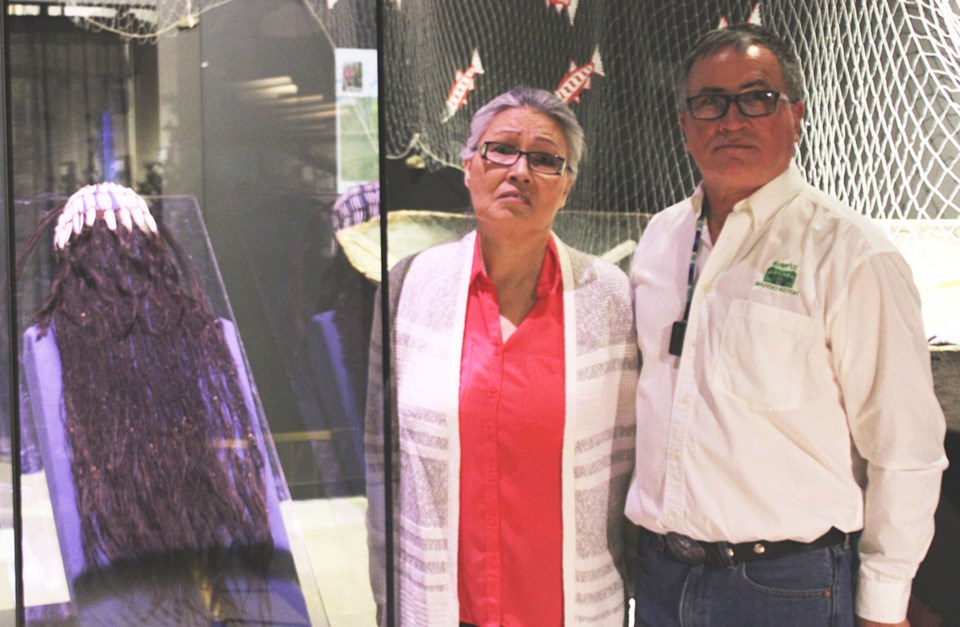About seven years ago, the Maiyoo Keyoh Society discovered a Susk'uz headdress was on display at the Royal Ontario Museum and it had been there for the past 140 years.
On Saturday at The Exploration Place in Prince George, the repatriation ceremony of the Keyohwhudachun headdress took place.
The celebration recognized all parties involved in this repatriation process.
The Maiyoo Keyoh Society welcomed neighbouring Keyohwhudachun (Keyoh chiefs), local Indian Act chiefs and councils, along with provincial and federal politicians. The grand opening celebrated the returned headdress, highlighting its intrinsic social connection to its family and Keyoh (territory), and demonstrates the region’s Indigenous social organization.
The Susk'uz Headdress Exhibit opening ceremony took place at 1 p.m. and included a performance by the Khast’an Drummers, a few words from Dominic Frederick, a welcome from Kathryn Louro, vice president of The Exploration Place, a keynote from Honourable Murray Sinclair, Jim Munroe with the Keyoh Cultural Institution who is also President and CEO of the Maiyoo Keyoh Society, Keyohwhudachun Petra A’Huille, and special guest speaker, Satsan Herb George that was followed by the exhibit unveiling.
“The return of our family territory chief’s headdress from the Royal Ontario Museum exemplifies many of the Truth and Reconciliation Commissions’ calls to action and reflects sections of the United Nations Declaration on the Rights of Indigenous Peoples,” Jim Munroe, President & Chief of Maiyoo Keyoh Society, said.
“It means a lot to me because my great grandfather used it often in ceremony,” Petra A’Huille, who is the latest Keyohwhaduchon (chief) for her Keyoh (territory.) Under the laws of the title, the headdress and responsibility for the land are passed down from one Keyohwhudachun to the next.
“It’s not just how spectacular the headdress is by itself, it’s the context of the family and the land,” Munroe said. “Petra grew up in the Keyoh culture since she was young. This is part of Petra’s identity, if I may say so, and having that headdress for her is part of acknowledging everything she has learned throughout her life.”
The Susk’us headdress exhibit is now open.
“I like to think of our role here as providing space,” Tracy Calogheros, chief executive officer at The Exploration Place, said.
“Museums have done a lot of harm over centuries and I believe this is an opportunity to offer some assistance as opposed to harm.”
Calogheros noted that the Royal Ontario Museum temporarily closed its First Nations gallery in October to consult with members of Indigenous communities to work toward truth and reconciliation by presenting exhibits only after consultation has taken place.
So having the chief’s headdress returned is particularly meaningful.
“Truly this is a profound return to territory and from The Exploration Place’s perspective we are just grateful to be a small part of it,” Calogheros said.
For more information about the exhibit visit https://www.maiyookeyoh.ca/susk-uz-headress-exhibit.


